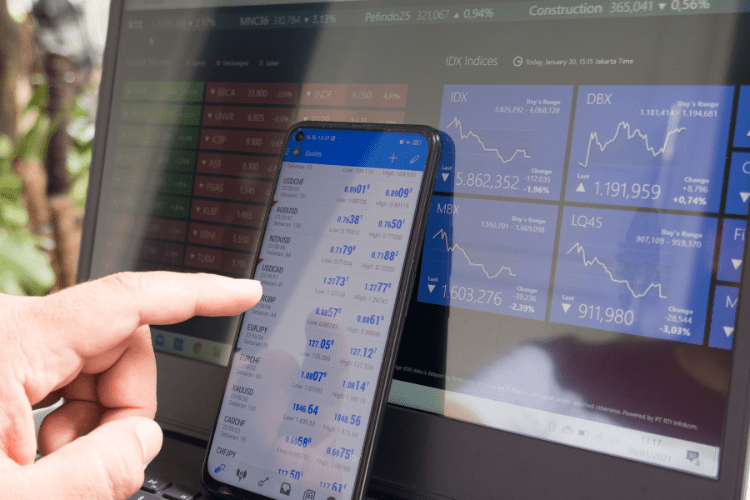Trading Stock Options: Is It Right For You?

 Disclosure: We’re letting you know that this post contains sponsored links which The Smart Wallet receives compensation for, which may impact their order of appearance. This site doesn’t include all available offers.
Disclosure: We’re letting you know that this post contains sponsored links which The Smart Wallet receives compensation for, which may impact their order of appearance. This site doesn’t include all available offers.
If you invest in the stock market, you’ve probably heard of phrases like “mutual funds,” “stocks” or maybe even “futures.” Great! This article discusses another common phrase that you can add to your investing arsenal: “stock options.”
More specifically, this article discusses stock options that are freely traded during stock market hours and does not refer to or discuss “employee stock options” that are granted in the capacity of an employer-employee relationship.
Stock Options Defined
A stock option is a contract between two parties, wherein the option buyer has the right, but not the obligation, to buy or sell shares of stock at an agreed-upon share price by the contract’s expiration date. In consideration of this right, the option buyer will pay money to open the contract. This sum of money is often referred to, in options lingo, as the “premium.”
The person on the other side of the exchange is called the option seller. The option seller will collect the premium from the option buyer, and in return will assume the obligation to buy or sell shares of stock from the option buyer, if the stock price reaches the agreed-upon share price by the contract’s expiration.
Technical Aspects of Stock Options
One option contract represents 100 shares of stock, and all stock option contracts have an expiration date. When the contract is opened, the buyer and seller will agree upon a share price to buy or sell 100 shares of stock, which is referred to as the strike price.
There are two categories of stock options: call options and put options. Call options allow the option buyer to purchase 100 shares of stock, and the option seller will have to sell 100 shares of stock. Put options allow the option buyer to sell 100 shares of stock, and the option seller will have to purchase 100 shares of stock.
How Options Contracts are Priced
Stock options are derivative financial instruments, which means that their value is derived from an underlying security. The price of an option contract is displayed on a per-share basis, which means that if an option is currently trading for $0.50 then the premium paid or received will be $50 per contract. (Remember, one contract is 100 shares x premium,so $0.50 = $50.00).
The price of an option contract will fluctuate as the price of the stock moves up or down, i.e., closer or further away from the strike price. If the stock price does not reach, or exceed, the strike price before expiration, then the option will expire worthless and the option seller will get to keep the premium received when the contract was initially opened and will not have to buy or sell shares from the option buyer.
Another important piece of information about options is that they have expiration dates, which means that if the option has not reached or exceeded the strike price, then it will slowly decrease in value each day it gets closer to expiring.
Stock Options in Practice
Stock options can be traded similarly to that of regular stock shares. This means that someone can open an option one day and close the option the same day, or the next day if they wish. Stock options can also be extremely useful tools to hedge or protect your long-term investment portfolio.
Stock options can also be used as a very effective tool to buy stocks at a discount, or to sell stocks for a profit.
Are you already intrigued? Check out one of Tiffany’s latest YouTube videos, from her channel Tiffany Trades Options, that helps explain more about options trading:
Using Put Options to Buy Stocks at a Discount
Picture this: I decide that I want to own 100 shares of Apple, Inc. in my investment portfolio, but I don’t want to buy it for the price it’s currently trading at. I think the current price is too high. So instead of buying 100 shares on the open market, I log onto my online brokerage firm and I decide to sell one put contract for Apple.
The strike price I select is approximately 10% below what Apple is currently trading, and I select an expiration date that is approximately 30 days away from the date I open the contract on.
When I sell to open this put contract, I receive the premium into my account, and then I wait for Apple’s stock price to drop below my strike price. I also keep cash in my account that will be available in the event I do ultimately want to purchase Apple for the strike price from the buyer.
If Apple’s stock price does not drop below my strike price before the 30 days is up, then the contract will expire worthless and I get to keep the entire amount of premium I received when I opened the trade.
If Apple’s stock price does drop below my strike price by the time the expiration date comes around, then I’ll buy 100 shares of Apple stock at the strike price I agreed to when I opened the trade. I also get to keep the premium I initially received.
Using Call Options to Sell Stock for a Profit
After purchasing Apple at a discount using put options, I decide later that I’d be happy to sell Apple for a price that is higher than what I originally paid. So, I log back into my broker account, and I sell one call contract for Apple. The strike price I selected is approximately 10% higher than what I purchased it for, and I decide to select another expiration date that is approximately 30 days away from the date I opened the contract at.
When I sell to open this call contract, I receive the premium into my account, and then I wait for Apple’s stock price to increase above my strike price. I don’t need to keep any additional cash in my account for this trade because my plan is to sell my 100 shares, instead of buying them.
If Apple’s stock price does not increase above my strike price by the time the contract expires, then the contract will expire worthless and I get to keep the entire amount of premium I received when I opened the trade and I get to keep my 100 shares of Apple.
If Apple’s stock price does increase above my strike price by the time the contract expires, then I’ll sell 100 shares of Apple stock at the strike price I agreed to when I opened the trade. I receive the cash proceeds of the sale into my account, and I get to keep the premium I initially received.
The Bottom Line
Stock options are a semi-advanced investing tool, so this primer only scratches the surface of available information. There is an abundance of free resources available that will help solidify this information. With that in mind, it’s important to note that stock options are not without their own set of risks, and it’s extremely important that anyone who undertakes options trading fully understands what they’re getting themselves into. To read more about options, including their associated risks, check out the Characteristics and Risks of Standardized Options.
Options trading is also not designed for every investor out there. This holds particularly true for anyone who tends to lean more risk-averse, and would prefer a long-term buy and hold stock strategy. If this is you, it’s worth your while to check out Stash, a popular investing app that lets you start investing with just $5. This is a beginner-friendly platform that gives you access to thousands of single stocks and ETFs (Exchange Traded Funds) that you can buy and hold for the long term. If, on the other hand, you think you’re ready to give options trading a try, but don’t yet have a broker to help, Robinhood offers a flexible, easy-to-use platform without all the frills.
Lastly, you might want to invest or trade options, but feel like you don’t have extra room in your budget to get there. One way to make some quick money to start investing? Sign up for Opinion Outpost, and earn up to $5 for every survey you complete! You’ll earn enough to start investing in no time.
Read More: How to Use Credit Card Balance Transfers to Give You a Boost With Your Investing










